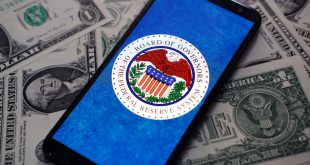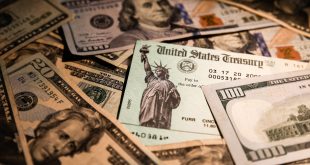Gold futures edged lower on Thursday, with prices on track to post their first loss in five sessions, after a rise in the US producer price index reading for December came in below market expectations.
It could be argued that the bullish case for gold is its reputation as an inflation hedge, especially given central banks’ recent record for recognizing how severe the situation is, but with inflation likely nearing its peak, that may not last.
It looks like Gold’s top three drivers in 2022 are inflation, the Federal Reserve, and stock market volatility, the performance of gold, so far is more of a referee on the Fed and a policy mistake (either rampant inflation or an aggressive hiking cycle bringing forward recession risk), who are currently well behind the inflation curve.
Even though gold is slightly down on the year so far, prices have the ability to move higher. Gold has one more push higher as the inflation or Fed policy mistake’ peak is not yet in. A short US labour market, future COVID variants and associated zero/low COVID policies create necessary persistent stagflationary forces.
There are downside risks to the economy once the Fed starts raising rates and reducing its balance sheet this year.
The average price forecast is still at USD 1,800/oz with upside risks, as disengaged investor subscription could reengage on equity market volatility and structural bullish drivers (unsustainable US and global debt path, asset bubbles, messy geopolitics, currency devaluation concerns, and impending sovereign crises), which usually reemerge on a Fed hiking cycle.
Despite gold’s disappointing performance in 2021, it is not in a bear market yet. The precious metal has an innate ability to rally when consensus is bearish.
Given the current US debt overhang, interest rates are unlikely to rise fast enough to drive very high real positive rates; negative or low real rates to persist throughout the Biden administration, creating a supportive backdrop for precious metals.
There are two alternative scenarios for gold in 2022; a surge to USD 2,000 an ounce and a drop to USD 1,400 an ounce. The bullish and bearish cases for gold cannot be more distant as it hinges on a very unpredictable Fed hiking cycle.
The USD 2,000 an ounce gold scenario involves the Fed failing to control inflation, increased physical demand, stock market volatility and new geopolitical risks.
The macro environment in the bullish scenario could include supply chain bottlenecks or higher energy prices drive sustained inflation risks, triggering renewed investment inflows. A Fed policy mistake leads to acceleration of stagflation narrative and a weaker US dollar or new geopolitical risks given inward-looking US foreign policy.
The bearish outlook depends on cooler inflation, more robust US growth and weaker physical demand.
If USD 1,675/oz is broken, all hope of pricing in inflation is gone and a new bear market is enacted, where it will lose appeal as a monetary asset and inflation hedge.
Fed tapering and hiking cycle is aggressive, contains inflation into mid-cycle, and drives both real and nominal rates much higher, much faster. Sustained reflation risk, improved global growth data and higher inflation leads to a faster Fed hiking cycle (higher interest rates, US dollar, inducing large-scale positioning deleveraging in gold). Central Banks turn net sellers.

 Noor Trends News, Technical Analysis, Educational Tools and Recommendations
Noor Trends News, Technical Analysis, Educational Tools and Recommendations




